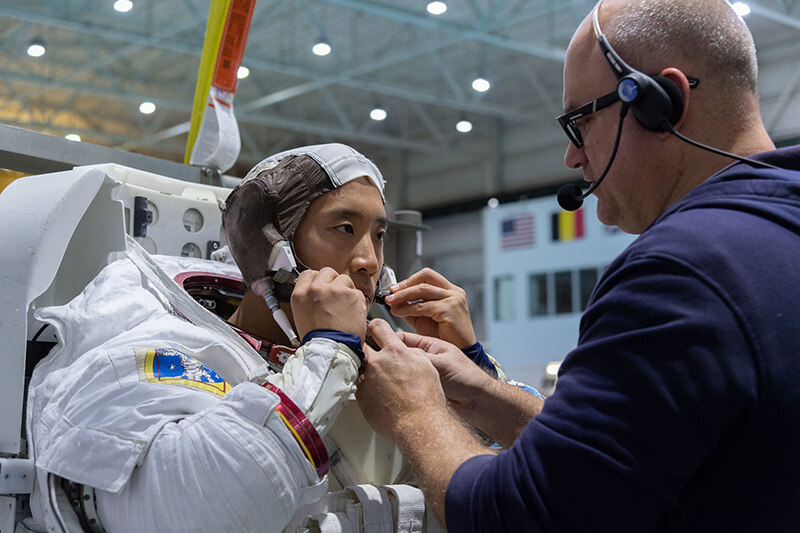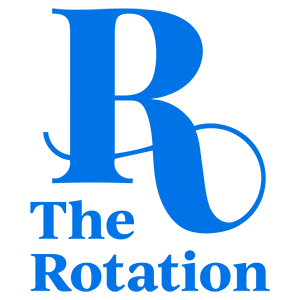Test pilots, engineers, and scientists can do a lot, but to truly understand the human body in space, you’ve got to send a doctor up.
They enter a world they know is not meant for life. Yet through prior training and preventative care, the body can adapt. The larger medical, scientific—even societal—rewards are clear.
“Microgravity is not healthy for our bodies – we know this,” Dr. Jonathan Yong Kim told me, over a video call this summer. Kim, who goes by ‘Jonny’, is NASA’s most recently minted physician-astronaut.
“Human bodies are meant to be stressed on a daily basis by gravity. Our bones require it, our cardiovascular system requires it.
“We have learned, through trial and error, that if we are going to put people in space, long-term, in a microgravity environment, we need to have countermeasures.”
“People need to look up, and they need to look up to something that they can hope for.”
Directly, Kim is talking about how much human knowledge of space medicine has improved since early spaceflight in the 1960s; a time when understanding and potential treatment was limited.
Indirectly, the Harvard Medical School-educated ‘space doctor’ could be talking about his own incredible journey; one that has seen him excel in the face of extreme pressure, and situational gravity.
Kim has long held an intrinsic desire to serve others that saw him through a sometimes tumultuous childhood in Los Angeles and decorated career as a Navy SEAL, to medicine.
In what is quickly becoming an exciting new age in human spaceflight, he now has the chance to go even further. NASA is preparing to send the first woman, and next man, to the Moon in 2024, aboard the Artemis 3 mission. They will be the first humans to walk there since 1972.
Yesterday, Kim was named as one of 18 astronauts who will participate in the Artemis program. Along with former emergency physician Kjell Lindgren and ex-surgeon Frank Rubio, he is one of three hailing from a medical background. One will likely be the first ‘space doctor’ to walk on the Moon.
A long career as an astronaut may even see Kim in line for a mission to Mars in the coming decades. Either way, the 36-year-old—only the second NASA astronaut with Korean heritage—may well be the face of space medicine for a coming generation.
“Space exploration is a win for everyone,” he says.
“I sincerely believe that, as we continue to push the bounds of what we know in space, in terms of human limitations, it benefits everyone on Earth. Knowing that I have a chance to be a part of it is exciting – it’s humbling.
“But you also have to remember that I and my other astronaut colleagues are just the tippy end of the stick, on this rocket. We’re just the lucky ones that get to experience this.”
Men in Green Faces
When he was a kid, Kim had a small picture of the Apollo 11 crew on his wall.
Though the trio had traveled to the Moon less than two decades before he was born, he told me that Neil Armstrong, Edwin ‘Buzz’ Aldrin, and Michael Collins seemed much further away, already.
“I had never really thought about being an astronaut,” Kim, now a father of three who lives in Houston, says.
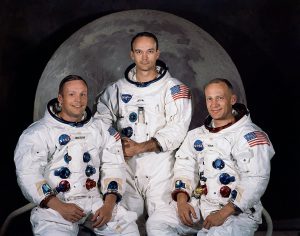
He is wearing a U.S. Navy t-shirt on our call. Some of his children’s art is on the wall behind him, while his dog Peppa wanders in and out of shot. A previously planned conversation had to be postponed when Hurricane Laura forced Kim to stormproof his house.
“That was a lofty dream for people that weren’t like me. I just never thought, as a kid, growing up, that I could do something like that.”
Born in LA on February 5, 1984, Kim was the son of two Korean immigrants who moved over in the early 1980s. His mother was an elementary school substitute teacher, while his father owned a liquor store in South Central LA.
Though his father has since passed away, both his mother and a younger brother still live in LA.
Kim has only spoken once publicly about his childhood, on a podcast earlier this year with his former SEAL Team commander in Iraq Jocko Willink. Willink earlier wrote a personal recommendation letter in Kim’s successful application to Harvard Medical School.
Theirs is a deeply moving, incredibly personal conversation between two men who have experienced combat together. To understand Kim’s story better, it is a true must-listen.
If being an astronaut was last on Kim’s list of things he wanted to do with his life when he was young, medicine may well have been second. At the very top was becoming a Navy SEAL, inspired by the interest of friends, and Gene Wentz’s Vietnam novel Men in Green Faces. Medicine, he says, was “serendipitous.”
“Like a lot of traditional Asian-American parents, [my father] wanted me to become a doctor,” Kim, who grew up in West LA and attended Santa Monica High School, says.
“[Being a Navy SEAL] gave me the opportunity to learn life-saving skills, and I had the opportunity to practice those skills in a wartime environment on both my teammates and civilians.”
“That was the last thing I wanted to do, was to go into medicine. Really, my dream, as a high school student, was to be a special operator in the Navy – I wanted to become a Navy SEAL. I wanted to embark on this journey as quickly as possible.”
“When I showed up to the recruiter [in 2002, aged 18], I asked what the fastest way to join the Navy was,” he continues.
“They said I had to be a hospital corpsman, which is the Navy’s version of a medic. So, for me, I wanted to be a Navy SEAL [but] I didn’t really care what route I [had to] take to get there, so, sure, I’ll be a hospital corpsman.
“It was very serendipitous, because I kind of found ‘me.’ I got this first taste of what it’s like to do medicine, and, as a result of that event, after I became a SEAL, I became the platoon medic or the platoon corpsman.
“That gave me the opportunity to learn life-saving skills, and I had the opportunity to practice those skills in a wartime environment on both my teammates and civilians.”
After graduating from the notoriously tough SEAL training, he joined Navy SEAL Team 3, and participated in more than 100 combat missions during two tours in Iraq, in 2006 and 2009.
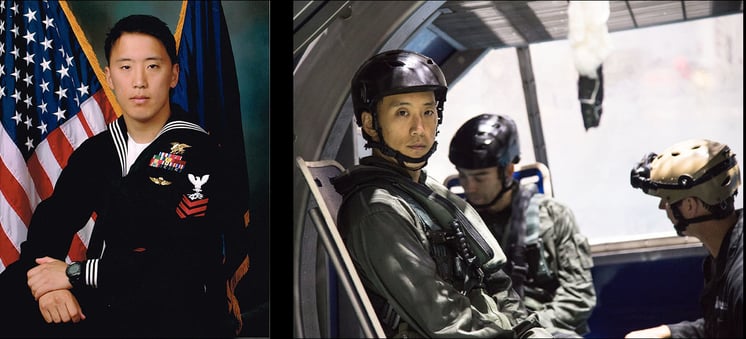
Kim was awarded the Silver and Bronze Stars for valor under enemy fire during his time in the SEALs, saving the lives of two Iraqi soldiers during the Battle of Ramadi to receive the higher decoration. In 2006, he was named the Special Operations Medical Association’s Naval Special Warfare Medic of the Year.
An key member of a close-knit unit, Kim, who—along with corpsman duties, did time as a sniper, navigator and point man—served alongside the likes of Michael Monsoor, a fellow Calfornian who was posthumously awarded the Medal of Honor for smothering a grenade with his body, saving two others, and famed SEAL Chris Kyle, whose life was portrayed in the 2014 Clint Eastwood-directed film American Sniper.
From Harvard to Houston
In Iraq, Kim faced life-or-death moments that challenged him as a SEAL, corpsman, and friend. Through it, he came to view medicine as a “light” at the end of the tunnel.
“I got to see the profound positive impact medicine can have on people,” Kim, now an active-duty U.S. Navy Lieutenant, says.
“War was a really hard period, as you can imagine, and I found medicine to be the light at the end of that. So after a couple of deployments, I knew that’s where I knew I wanted to take my intrinsic desire to serve down a different path. That’s why I transitioned into medicine.”
After being accepted into Naval officer training in 2009, Kim enrolled at the University of San Diego, where he completed a degree in mathematics in 2012. The same year, he was accepted into Harvard Medical School.
“Why wouldn’t NASA want [Jonny Kim]? We wanted him. Harvard Medical School wanted him. Everyone wanted him.”
Graduating in 2016—the same year he became a commissioned Naval officer—Kim cut an impressive presence amongst students and faculty alike, at Harvard.
“He’s the steadiest person you could imagine,” Dr. David Cardozo, an assistant professor in neurobiology at Harvard Medical School, told the Harvard Gazette, in 2017. “He’s very gifted and he has a depth of character that’s unequaled.”
Through Harvard, Kim was able to connect with Scott Parazynski, a former physician-astronaut who flew on five space shuttle flights between 1994 and 2007. Parazynski encouraged him to apply to NASA, which, like the veteran astronaut, he did one year into a four-year emergency medicine residency at Massachusetts General Hospital.
“Why wouldn’t NASA want him?” Dr. David Brown, head of MGH’s Department of Emergency Medicine, also told the Gazette. “We wanted him. Harvard Medical School wanted him. Everyone wanted him.”
Of around 18,000 people who applied to join NASA’s Astronaut Group 22, nicknamed ‘The Turtles’, only 12 were accepted. Kim was one of them, and was buying groceries when the good news came through.
Though Kim has previously described the decision to leave medicine as more of a pause than a goodbye, he admits joining NASA was “bittersweet.”
“I didn’t face those crossroads when I applied, just because I knew that the chances were very, very slim,” he says. “I didn’t think of it as a real possibility that I would be accepted. After I got the phone call and it became more clear that I would have the opportunity, it was a hard choice.
“It was hard, and it was uncertain, but like other periods of my life when I’ve been at those crossroads, I came to the realization that I’d never want to live the rest of my life [and] grow old, and, at the end, look back, and wonder what could have been.
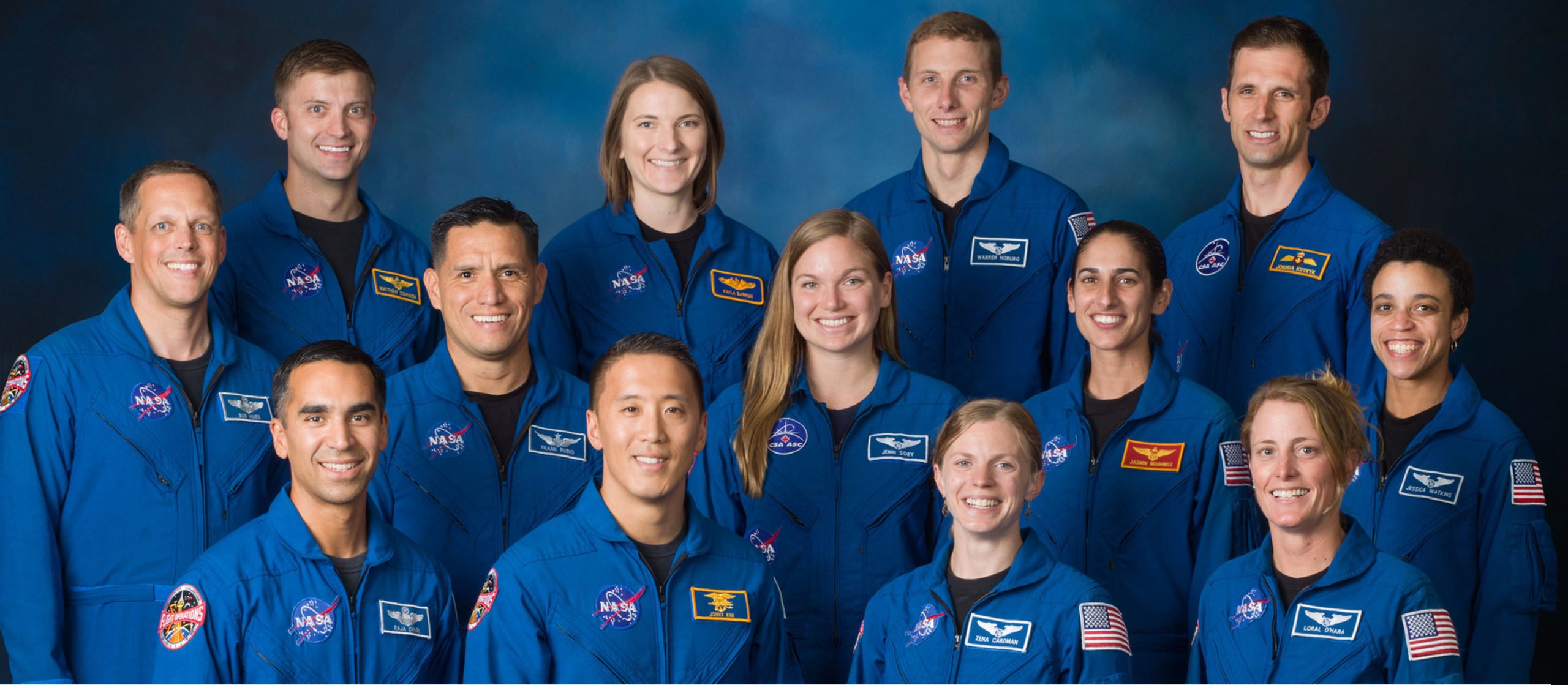
“[But] it was a bittersweet decision. I didn’t think too long about it, because I knew it would be a once-in-a-lifetime opportunity and I made it.
“[I’ve] never looked back, but I would be remiss if I said that I didn’t miss medicine. I certainly miss a lot of aspects about medicine, but I feel like I’ve carried forward a lot of those elements with me at NASA.”
Medicine in Space
Though Russian cosmonaut Dr. Boris Yegorov was the first physician to travel into space, aboard Voskhod 1 in October 1964, Dr. Joseph Kerwin became the first American space doctor, aboard Skylab in 1973.
Back then, space medicine was relatively primitive. Though wearing basic biomedical harnesses, Armstrong and Aldrin took little more than a handful of sleeping pills, painkillers, and aspirin to the Moon in July 1969. Orbiting above them, Collins had an oral thermometer, and compress and adhesive bandages, but not much else.
Things improved on Skylab, where Kerwin had access to an in-flight medical support system with intravenous fluids, a minor surgery kit for suturing, hemostasis, and lab capability. “I could even do cardiopulmonary resuscitation if it were necessary,” Kerwin told a U.S. Navy historian, in 2011.
Since Kerwin, a number of physicians have gone up, including Parazynski, Dr. Jim Bagian, and Dr. Story Musgrave, a celebrated Space Shuttle commander who practiced clinical medicine part-time in Denver while serving in NASA.
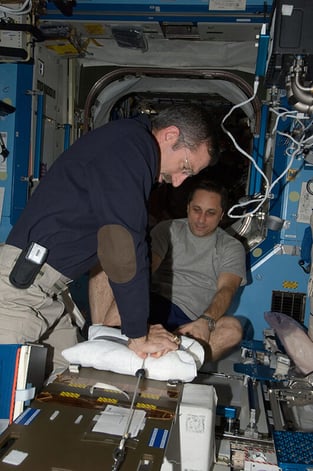
Active physician-astronauts include Lindgren, Rubio, Drew Morgan, Tom Marshburn, Serena Aunon-Chancellor, and Michael Barrett. Though Skylab had a basic treadmill, preventative care of the human body in space has taken giant steps since the 1970s.
The International Space System (ISS) has an advanced micro-gravity treadmill, an exercise bike, and a complex weight loading system called the ARED (Advanced Resistive Exercise Device). Amongst a number of medical research projects taking place aboard the ISS is one producing encouraging results for future treatment of Alzheimer’s disease.
“I think as physicians we are very used to raw and hard, tough emotions,” Kim says, when asked how medicine has impacted his experience of being an astronaut.
“There’s a lot of emotions that go on in a hospital. If you’re working on the wards, if you’re an oncologist giving bad news to your patients, if you’re in the emergency room and you have a young patient coming in who is very sick – there is a lot of struggle there; human struggle.
“Not that it’s unique to medicine—I certainly experienced that, from a different perspective, being a military special operator—but medicine gave me a different human perspective on.
“[It] certainly made me more compassionate, and what it really helped me [with] is communicating with people on very difficult topics. I feel like that helped me round out my soft skills that I didn’t really have a chance to develop in SEAL teams.
“I certainly developed a lot of my hard skills, being in the military, but the soft skills with communication and [the] dynamic posturing with your colleagues in order to facilitate a really cohesive team; I didn’t learn those skills until I went to medical school, worked on the wards, and had to talk to patients.
“Those are the skills that I feel helped me a lot for medicine, that I was able to take with [me] to NASA. Those skills are exercised on a daily basis.”
Reaching for the Stars
If Kim hadn’t received that grocery store phone call, there’s a good chance that, instead of preparing to head to the Moon, he would be on the frontlines of the COVID-19 pandemic. 2020 would have been the final year of his emergency medicine residency.
Nearly 290,000 Americans are dead from COVID-19, while the coming winter may deliver the U.S. healthcare system its biggest pressure test in living memory.
As a physician, Kim acknowledges that sending people into orbit right now might seem strange to some. Yet he also sees the bigger picture, of reaching for the stars.
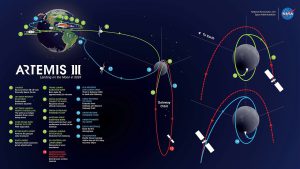
“There’s a joke [going around] that the safest place is on the International Space Station right now,” Kim says, before acknowledging the deeper nature to it all.
“There’s a couple of ways to view this, and I understand both perspectives. One is why would we go to space, why would we go to the moon, at a time like this? The world is dealing with so much. Why can’t we just focus on our problems right now, and fix what’s down here?
“I understand that, I really do, [but] I see it the other way around. The other point of view is there is no better time than now to look at the stars, look at the moon, and reach for them, and achieve those goals, because that is planting the seed every day.
“You can not quantify the effect you’re going to have on people, planting those seeds, and inspiring the next generation.”
“We have learned, through trial and error, that if we are going to put people in space, long-term, in a microgravity environment, we need to have countermeasures.”
“People need to look up, and they need to look up to something that they can hope for,” he continues.
“I think that NASA is really good with that, and I think that space exploration can bring that [feeling] to more people because space exploration will improve the lives of humans on Earth. We see it daily – we take it for granted.
“We have GPS, we have our phones, we have medicine, we have data on climate change – [scientifically] none of this would be possible if it wasn’t for space exploration.
“I feel very proud, and very blessed and humbled to be a part of that, to be still reaching for the skies and the stars, during this really uncertain time in our world right now.”


